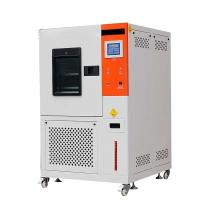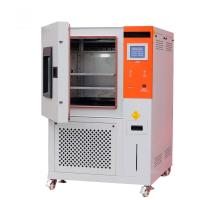In the highly competitive consumer electronics and home appliance
industry, the performance and durability of products like TVs,
refrigerators, and air conditioners are of utmost importance. A
Constant Climatic Test Chamber tailored for these appliances is a
sophisticated and essential tool. This chamber enables
manufacturers, quality control teams, and researchers to subject
these large - scale products to a precisely controlled and stable
set of climatic conditions. By doing so, they can comprehensively
evaluate how these appliances perform and endure in various real -
world environmental scenarios.
The Constant Climatic Test Chamber designed for TVs, refrigerators,
and air conditioners is engineered to meet the unique testing
requirements of these home appliances. TVs are expected to function
flawlessly in different lighting, temperature, and humidity
conditions. Refrigerators need to maintain a consistent internal
temperature and humidity regardless of the external environment,
while air conditioners must be able to operate efficiently in a
wide range of ambient temperatures and humidity levels.
The primary purpose of this chamber is to simulate the diverse
environmental conditions that these appliances may encounter during
their lifespan. This includes extreme heat in summer, cold winters,
high humidity in coastal areas, and dry conditions in arid regions.
By subjecting TVs, refrigerators, and air conditioners to these
controlled conditions, manufacturers can identify potential
weaknesses in design, materials, and manufacturing processes. This
knowledge can then be used to improve product quality, enhance
durability, and ensure that these appliances meet the high -
quality standards expected by consumers.
- Wide Temperature Range
- The chamber is capable of maintaining a broad temperature range
suitable for testing these appliances. It can reach extremely low
temperatures, typically as low as - 70°C, which is useful for
testing refrigerators' ability to maintain proper cooling in cold
storage environments or air conditioners' performance in sub - zero
temperatures. On the other hand, it can achieve high temperatures
of up to + 150°C, simulating the heat in a poorly ventilated room
during a hot summer or the conditions in a sun - exposed area.
- The temperature control is highly precise, with an accuracy of
typically ±0.5°C. This precision is crucial as even small
temperature variations can significantly affect the performance of
these appliances. For example, a slight deviation in temperature
can impact a TV's display quality, a refrigerator's cooling
efficiency, or an air conditioner's energy consumption.
- Accurate Humidity Regulation
- Humidity levels within the chamber can be precisely regulated from
as low as 10% relative humidity to as high as 95% relative
humidity. High humidity can cause condensation problems in TVs,
rusting in refrigerators, and reduced efficiency in air
conditioners. Low humidity, on the other hand, can lead to static
electricity issues in TVs and affect the moisture - sensitive
components of refrigerators and air conditioners.
- The humidity control accuracy is usually within ±3% relative
humidity. This ensures that the test environment closely replicates
the real - world humidity conditions that these appliances may
encounter, providing reliable and consistent test results.
- Large Test Volume
- Given the size of TVs, refrigerators, and air conditioners, the
constant climatic test chamber features a large test volume. It
typically ranges from 10 m³ to 50 m³, allowing for the easy
accommodation of these large - sized appliances. The spacious
interior ensures that the entire appliance can be exposed to the
uniform climatic conditions without any spatial constraints.












